My Bay Kitchen’s “20 FILIPINO FOODS YOU NEED TO TRY BEFORE YOU DIE!”
HOW many times in the last 5 years have I heard critics say that Filipino food is going to be the “next big thing in America.” It’s 2016 and I have yet to see the predictions come to fruition.
So what could have gone wrong?
I could only surmise that so much have been focused on popular Filipino cuisine like lumpia, pancit, kare-kare and adobo, but Filipino food is so much more. While many are adaptations of international cuisine, or are influenced by the Philippines’ historical interaction with its colonizers or trade partners, ethnic and authentic Filipino food abound in the country’s island regions.
The biggest challenge in putting this list together is narrowing it down to 20. So this list is by no means a representation of everything gastronomically unique about the Philippines.
And, as a matter of disclosure, I come from the island of Luzon. Hence you might notice that this list leans more towards the island’s cuisine. This doesn’t mean there are not foods from the Visayas and Mindanao that deserve to be on a top 20 list. Hopefully, others from the those islands can put together their own list to share. I would be looking forward to it!
So let’s get right on it. . .
(All photos by Rene Astudillo unless otherwise indicated)
1
Sundot Kulangot
Inside the tiny ball of this delicacy is a very frugal version of kalamay. The much larger kalamay is usually made from a mixture of glutinous rice flour, coconut milk and molasses.
This sweet stuff is placed inside a half shell of a local tree fruit. The other half of the shell is then put back, held together by a strip of red crepe paper. Several of the balls are then placed between bamboo sticks tied together with wicker strings. It’s definitely a labor of love!
The name given to this delicacy is all but appetizing. Just ask anyone who speaks Tagalog.
But what’s in a name?
(This delicacy is found in Baguio City, the summer capital of the Philippines, particularly in its famous market, usually in the vegetable or dry goods section)
2
Talbos Ng Sayote (Chayote Leaves)
You may be familiar with the chayote (sayote) fruit as a basic ingredient for soups and chicken dishes. They approximate the taste and texture of green papaya. But did you know that the leaves of chayote (talbos ng sayote) are also edible and are a great substitute for recipes requiring green and leafy vegetables?
Chayote leaves are often underrated perhaps because not too many people encounter them in their supermarkets — unlike the more popular spinach and kale leaves.
Raw, the chayote leaves have a rough texture, almost corrugated. But don’t let their looks deceive you. Once cooked, they are absolutely delicious and can be a threat to the popularity of kale.
Chayote leaves can be prepared and served as salads, but this recipe calls for cooking with pork slices and oyster sauce.
Recipe for Talbos Ng Sayote with Pork in Oyster Sauce.
3
Dynamite Lumpia
You’ve probably already guessed why this recipe is called “dynamite.” It explodes in your mouth because it’s hot and spicy, as you would expect of Jalapeño peppers. In Mexican cuisine, chillies are cooked like omelets (relleno). In the Philippines, we stuff them in our egg rolls, or lumpia.
For the Jalapeño neophytes, I’ve added an option in this recipe to include dried raisins in the pork mixture, just to give it a little sweet taste that would hopefully temper the spiciness. Otherwise, a sweet sauce would do the trick.
Recipe for Dynamite Lumpia
4
Dinakdakan
Dinakdakan is an Ilocano delicacy made with grilled pork parts such as the face, ears, liver and tongue. The charred meats are chopped into small pieces and tossed in a tangy citrus or vinegar dressing with minced ginger, red onions and chili peppers. Mashed pig brain is then stirred in to add creaminess. It is similar to sisig, a popular Kapampangan (from the province of Pampanga) dish.
The best source of Dinakdakan, especially if you’re out and about in the Ilocos region, would be the food stalls that line public plazas or in areas frequented by public utility drivers and construction workers during their lunch or dinner breaks.
I had my first taste of Dinakdakan in one of the places in the hip restaurant row on Maginhawa Street in Quezon City. It’s called Provenciano (a play of words, I think, to refer to someone who is from the province). It is included in the appetizer (pampagana) section of their menu, and described as: “grilled sliced pork jowls and belly, seasoned with onions, chili and native vinegar. No mention of pig’s brain, but …
5
Ararusep (Seaweed Salad)
Whenever I am in California, I always say that I would cross the Pacific Ocean just to have Ararusep, a strain of the seaweed variety known as Caulerpa taxifolia. They look like miniature green grapes.
I constantly crave for Ararusep which is not available in the U.S. where Caulerpa taxifolia is listed as a federal noxious weed, under the Plant Protection Act. The state of California also prohibits possession of nine different species of Caulerpa. “Noxious” perhaps to other sea creatures, but not to this Homo Sapiens.
There is no complicated recipe needed, just fresh and cleaned Ararusep, served with tomatoes and onions, and seasoned with salt and pepper, fish sauce or vinegar. This salad is a great accompaniment for grilled meat or fish.
There have been a few studies conducted on the health benefits of Ararusep. It is known to alleviate certain conditions including hypertension, heart disease, cancers and diabetes. Now that would make people cross the Pacific Ocean many times over!
(Frozen packaged ararusep may be available in some Filipino groceries in the U.S., but the ‘grapes’ are tinier than the ones harvested in the Philippines. And because they’re frozen, the texture when thawed doesn’t do justice to this gem of the sea
6
Ginataang Kuhol (Escargot In Coconut Milk)
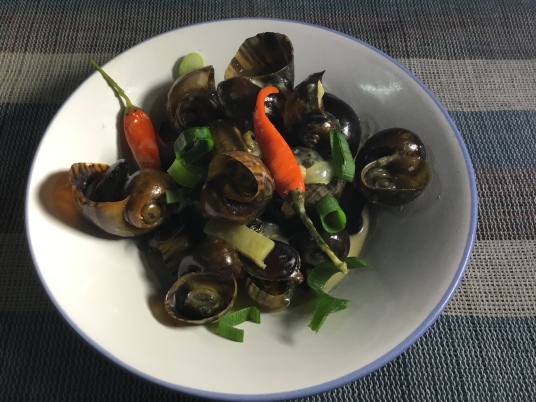
Since that “to die for” moment in 2008 eating baked escargot at a Paris family-owned restaurant, the thought of preparing this delectable appetizer at home on a regular basis has not escaped my mind. Living in California, it has been a challenge finding edible snails in supermarkets or grocery stores.
Now that I’m back in my hometown of Baguio City, a short trip to the city’s public market would get me unlimited quantities of live snails. Vendors don’t always display the snails in the open; you have to ask for them.
Who needs to go to a French restaurant for a small plate of expensive escargot, when I can have a dozen of it at my beck and call, for a fraction of the price?
Recipe for Ginataang Kuhol
7
Sinampalukang Kambing (Goat in tamarind soup)
For those who have been introduced to, or enjoy goat meat, kaldereta or kilawen are probably the two ways they enjoy this Filipino delicacy. But another way to savor goat meat is through a soup dish, sinampalukang kambing, cooked low and slow with unripe tamarind fruit (sampaloc). Also known as Up and Down, the head (Up) and feet (Down) of the goat are what’s traditionally used in this sour soup.
Don’t let the pungent smell dissuade you from trying this dish. It is one those Filipino foods often described as smelling like hell but tasting like heaven!
Photo and recipe courtesy of kawalingpinoy.com.
8
The Empanadas of the Ilocos
Empanadas are a delicacy in many parts of the world, but the famous empanadas in the Ilocos are unique in their ingredients and preparation. There’s even a friendly competition between north and south (Ilocos Norte and Ilocos Sur) as to which empanada is better!
The Vigan (Ilocos Sur) empanada includes vegetables like green papaya or cabbage, carrots, skinless Vigan longganisa, and egg. It is deep-fried, and served with a special vinegar dip, known as sukang Iloko (vinegar from the Ilocos region of the Philippines).
The Batac (Ilocos Norte) empanada is characterized by its orange crust due to the use of achuete leaves and has a filling of young papaya shreds, whole egg, mung bean sprouts, and longganisa and is best eaten with sukang Iloko as its sawsawan (sauce). Most stalls selling this empanada can be found in the Batac Riverside Empanadaan.
Our recommendation? Try them both! After all, it is only a short drive between Vigan and Batac.
Vigan empanada home-cooked recipe
9
La Paz Batchoy
La Paz is a town in Iloilo and is known in the culinary setting for its unique and tasty soup dish called “batchoy.” The dish was concocted in the La Paz market in 1938 by Federico Guillergan, Sr. The soup’s ingredients include egg noodles, slices of pork, liver and other pig innards. When served, it is garnished with green onions, roasted garlic and ground pork rinds.
There are many reasons to visit Iloilo, among them, its annual Dinagyang Festival, but what better reason can one think of other than celebration? Dinagyang and La Paz Batchoy, both.
La Paz Batchoy Recipe
1o
Tortang Alimasag (Crab Omelet)
An omelet is an omelet, one might say, but it is all about ingredients, and preparation. If you like crab — and who doesn’t ? — the tortang alimasag is a feast for your eyes and your palate. For some reason, serving this crab omelet inside the shell takes the experience several notches up. It’s just like serving steamed rice on a banana leaf, if you know what I mean.
Recipe for Tortang Alimasag
11
Pig Ears Barbecue (Tenga ng Baboy)
It is without doubt that some of the best foods in any country in the world are not always found in five-star restaurants or hotels. Oftentimes, they’re street food peddled by vendors on sidewalks or in public markets. They’re far from the more accomplished prime cuts of beef or expensive fillets of fish. Rather, they’re made from the most unusual parts of animals or the rarest of plant species.
Tenga ng baboy is a popular street food in the Philippines. They’re often sold in bus stops where vendors set up temporary food stalls complete with portable barbecue fire pits.
This barbecue is made from pigs’ ears — cartilage and all — sliced into bite-sized pieces and strung on bamboo skewers. They’re pre-cooked before being charred on the barbecue grill and brushed with a somewhat salty, somewhat sweet sauce. And make sure to ask for the vinegar dip with spicy chili pepper.
Photo and Recipe courtesy of CasaVeneracion.com
12
Crispy Fried Dried Anchovies (Dilis)
These salty dried anchovies don’t require a lot of preparation or cooking. They usually come packaged and processed and are available at most Filipino or Asian grocery stores, or in Philippine public markets. All you have to do is fry them quickly then serve with a side of spiced vinegar dip.
Dilis is often described as a “food for the masses” because it is inexpensive and widely available. But I would argue that it should command better respect among food connoiseurs and chefs. As a matter of fact, you should try offering dilis at your next hosted cocktail party. Skip the caviar! Skip the beef jerky!
Stock up on this delicacy. After all, it has a long shelf life!
13
Kapeng Barako
Long before there was Starbucks, there was Kape Barako, an uncommon coffee variety that could only be found in Southeast Asia, especially in the Philippines. Barako is from the Liberica variety and has a strong taste, flavor and a distinctively pungent aroma. It is grown in Batangas and Cavite provinces.
Kape Barako is prepared using a drip brewing device, French press, or by simply pouring hot water unto the grounds and filtering the mixture using a piece of cloth. It is best sweetened with honey or brown sugar, and can also be used to make espresso and other espresso-based drinks.
In the 1880s, the coffee industry in the Philippines collapsed due to an infestation dubbed as “Coffee rust” as well as tough competition from coffee growers in South America and Vietnam. This caused Kape Barako growers to shift to other crops.
Today, Barako accounts for less than 1% of commercial coffee grown.
They can be obtained from coffee vendors in public markets in the Philippines. Some coffee shops like Figaro use them in some of their coffee offerings.
So if you’re into strong and tough coffee, go Barako!
14
Pinaputok Na Tilapia
Tilapia is a very popular fish. Among Americans, filleting the fish is the preferred method of preparation.
In the Philippines, as in other Asian countries, tilapia and other fish are prepared, cooked and served whole, which can pave the way to unique recipes like this delicious Pinaputok na Tilapia. Pinaputok means to allow to burst or explode.
In this recipe, a whole tilapia is stuffed with a mixture of tomatoes, onions, garlic and ginger to almost “bursting,” and bathed in tamarind and melted butter. The stuffed fish is then wrapped in foil to fully secure and is baked until super moist and flavorful.
Other ways of cooking this recipe include pan-frying, steaming or grilling.
Recipe for Pinaputok na Tilapia
15
Bicol Express
Contrary to popular belief, Bicol Express was not invented in the Bicol region of the Philippines. Rather, it is a dish which was popularized in the district of Malate, Manila.
The Philippine Cookbook (Virginia Roces de Guzmán and Nina Daza Puyat) states that the dish was invented by Cecilia Kalaw during the 1960s. However, it was actually Demetrio ” Etring ” Kalaw who introduced the dish in Manila. Demetrio married a Milagros Estrada from Iriga City, Camarines Sur. While living in Iriga City, Demetrio was introduced to the dishes indigenous to the region. Later on, he and Milagros opened a small restaurant in Malate where Bicol Express and other dishes were served buffet style.
Bicol Express is a stew made from long chillies (siling mahaba in Tagalog, lada panjang in Malay/Indonesian), coconut milk, shrimp paste or stockfish, onion, pork, and garlic. It is said to have been inspired by the fiery Bicolano dish gulay na may lada, which is nowadays presented as one of the many variants of Bicol Express.
Bicol Express was named after the passenger train service from Manila to Bicol, a region in Central Philippines famous for its spicy cuisine.
This dish is not for the faint of palate!
Many Carinderias (Filipino fast-food restaurants) serve this as part of their regular menu.
16
Pigar Pigar, Where’s the Beef?
This dish from Pangasinan, a cross between grilled beef steak and the Ilocano imbaliktad, is affectionately called by the natives and gourmand alike, PIGAR PIGAR. Roll your “R.”
You marinate thin slices of very fresh beef sirloin and liver in salt and pepper. These must be fresh because you want to keep the grassland aroma of Bugallon, San Fabian, Rosales or Asingan (towns in Pangasinan province). And for health reasons, of course. The salt and pepper must be as little as possible, just enough to coax the timid Pangasinan beefiness out of the meat, not to mask or overpower it. You aren’t making bagoong, are you? That you are in the land of salt is no reason to be wasteful or extravagant either.
Let the meat cure for about half an hour, which gives you time to prepare your onion rings. Then stir-fry until medium rare, about three minutes, so it is tender, sweet and succulent. Add the onion rings and stir-fry for another second; you want them wilted just right to add character to the meat but not call attention to themselves.
Now that we’ve got your beefy attention, read the rest from frequent My Bay Kitchen guest blogger, Eugene Caccam.
17
Kwek Kwek or Tokneneng, Your Choice!
Tokneneng is a popular street food in the Philippines and is also served in some restaurants. It is boiled duck or chicken egg coated with batter and then fried. The batter has an orange color because it is infused with annato powder.
Quail eggs can also be used in this recipe, and they’re called a different name – kwek-kwek (pictured).
Tokneneng & kwek-kwek are usually served with spiced vinegar, or some sweet sauce.
18
Igado (Pork and liver stew)
Igado is a popular dish in the Ilocos region. It is comparable in taste and ingredients to another popular Filipino dish called menudo. The big difference is that unlike with menudo, tomato sauce is not used with Igado. Instead, the recipe is seasoned with soy sauce, vinegar and fish sauce.
Recipe for Igado
19
Siopao (Make that Espesyal!)
Steamed pork buns are a familiar item in dim sum restaurants, but there is nothing like the Filipino version, called siopao. This is the supersize edition filled with either pork asado (sweetened pork) or bola bola (meat balls). But if you haven’t tried siopao espesyal then you are missing a lot!
I consider siopao especial as the buffet version of this favorite comfort food, complete with a combination of pork, beef, shrimp, Chinese sausage, duck egg and mushroom. Depending on where you buy them, you might even get some other extra ingredients.
So the next time you crave for steamed pork buns, supersize them and go for the siopao, and make that espesyal — available at a Filipino restaurant or grocery near you!
20
Dinardaraan (Ilocano blood stew)
Next to balut, dinuguan or blood stew, is probably the most dreaded of all Filipino foods. Not even calling it chocolate soup would entice the uninitiated to give it a try.
But for those familiar with this delicious dish, dinuguan is always a welcome fare during get-togethers or when eating out at specialty restaurants or Filipino fast food places.
But there is one kind of dinuguan that many Filipinos have probably not tried, and that’s the Ilocano version called dinardaraan. Unlike the soupy dinuguan of the Tagalogs, dinardaraan is dry and sometimes oily.
When you get the chance to encounter the Ilocano version, jump on it. It may make you like dinuguan even more!


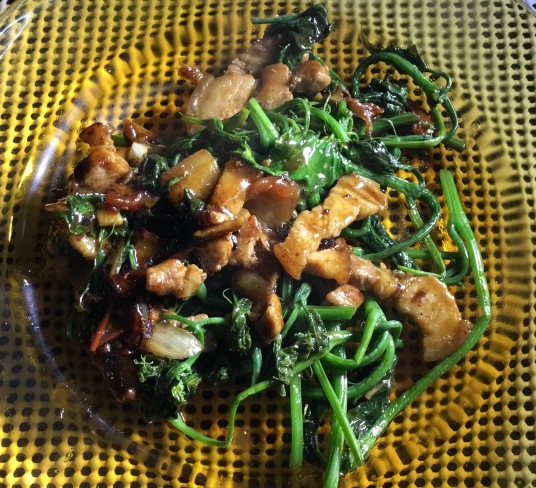
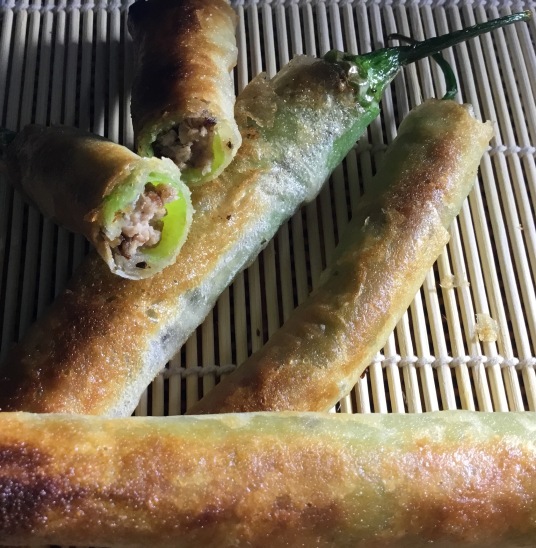
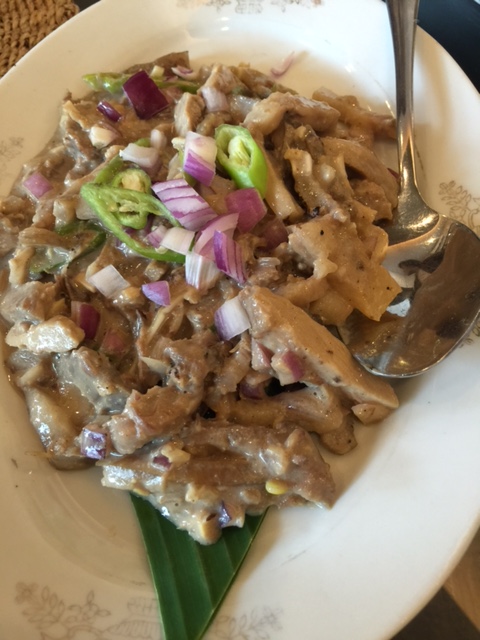
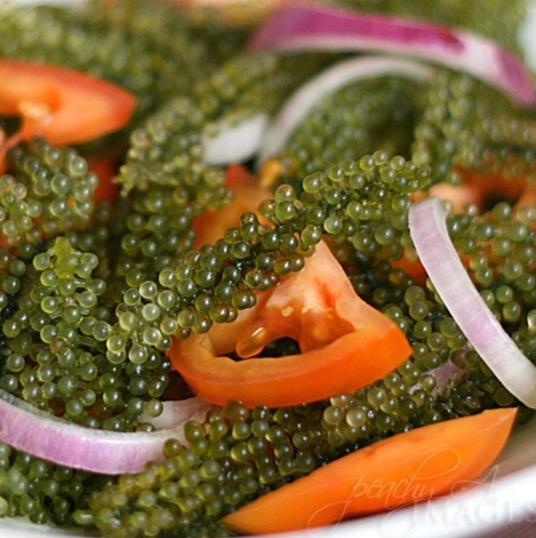
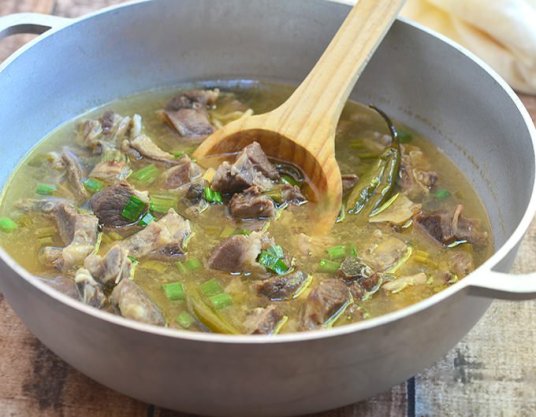
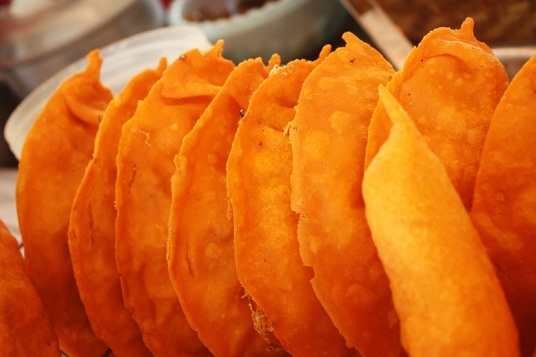
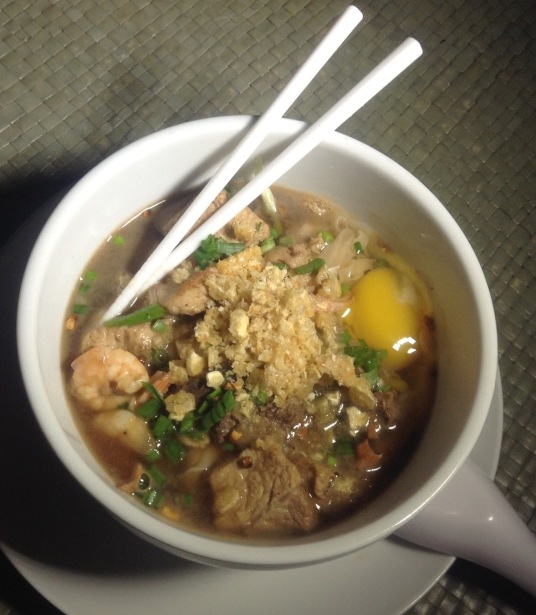
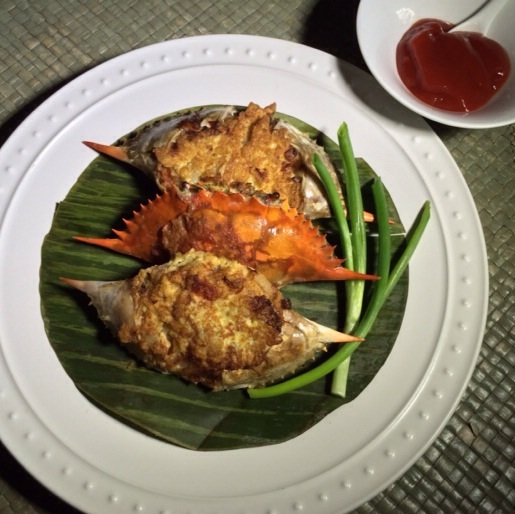

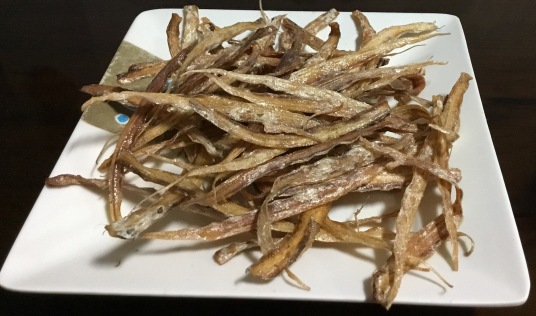
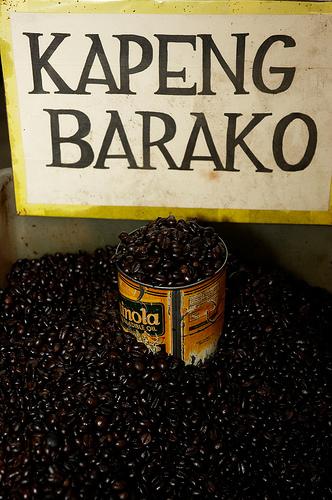
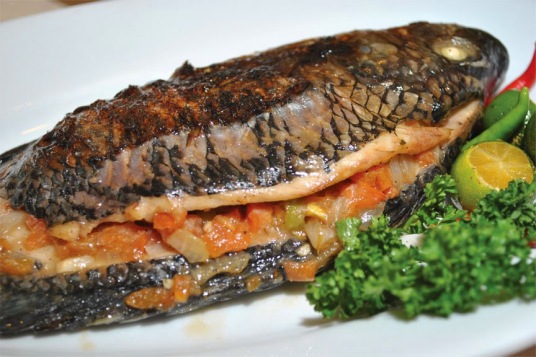
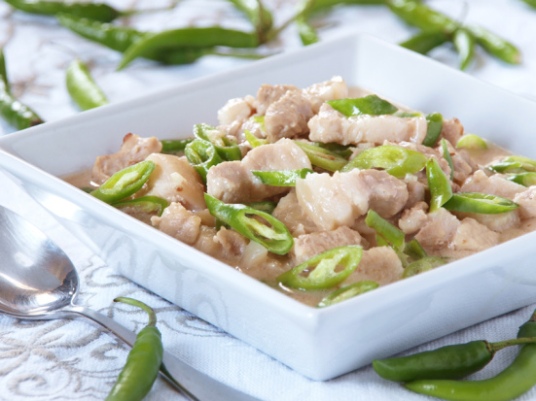
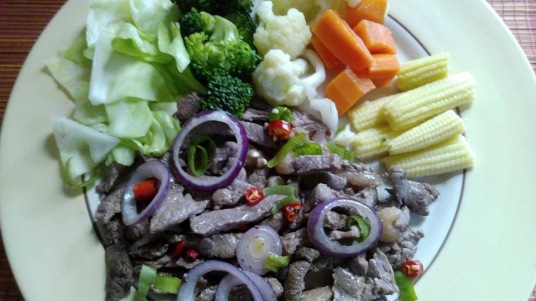
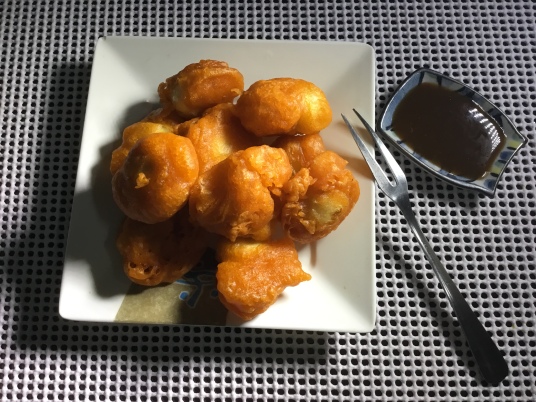
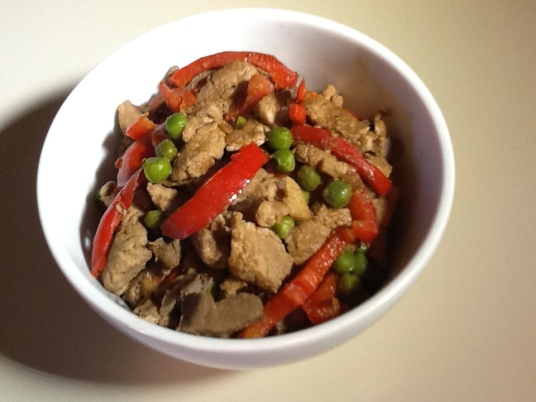
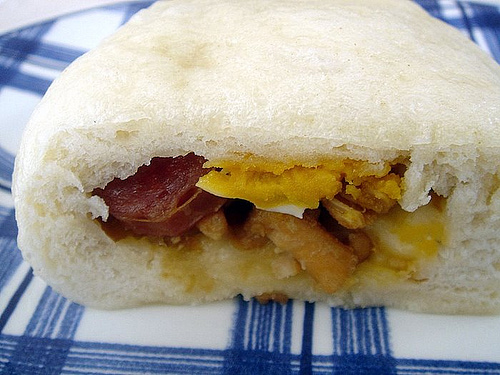
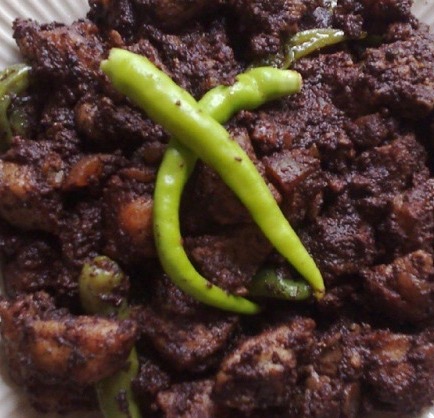
Pingback: 20 Filipino Foods You Need To Try Before You Die |
Pingback: 20 Filipino Foods You Need To Try Before You Die |
Reblogged this on Denal's Mind and commented:
Interesting list.
LikeLike
19/20. Pigar Pigar lang hindi ko pa nasubukan.
LikeLike